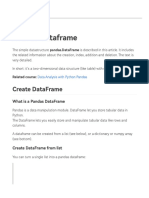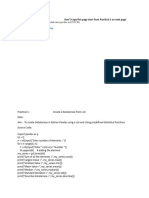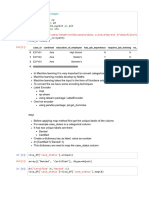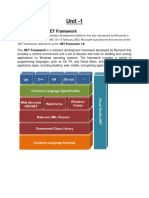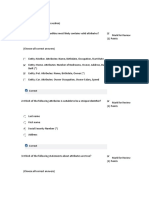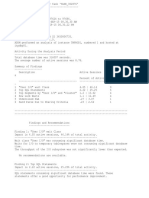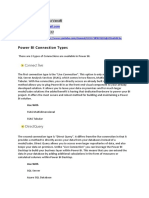0% found this document useful (0 votes)
58 views7 pagesEDA - Session-1 - Basic Dataframe Opertaions-1
The document discusses reading and manipulating CSV files using Pandas in Python. It shows how to:
1) Import necessary libraries and read a CSV file into a Pandas DataFrame.
2) Create DataFrames from lists, dictionaries, and zipped data with or without specifying column names and indexes.
3) Add, update, and drop columns and rows from DataFrames.
4) Save DataFrames to CSV and Excel files.
Uploaded by
jeeshu048Copyright
© © All Rights Reserved
We take content rights seriously. If you suspect this is your content, claim it here.
Available Formats
Download as PDF, TXT or read online on Scribd
0% found this document useful (0 votes)
58 views7 pagesEDA - Session-1 - Basic Dataframe Opertaions-1
The document discusses reading and manipulating CSV files using Pandas in Python. It shows how to:
1) Import necessary libraries and read a CSV file into a Pandas DataFrame.
2) Create DataFrames from lists, dictionaries, and zipped data with or without specifying column names and indexes.
3) Add, update, and drop columns and rows from DataFrames.
4) Save DataFrames to CSV and Excel files.
Uploaded by
jeeshu048Copyright
© © All Rights Reserved
We take content rights seriously. If you suspect this is your content, claim it here.
Available Formats
Download as PDF, TXT or read online on Scribd
/ 7





































